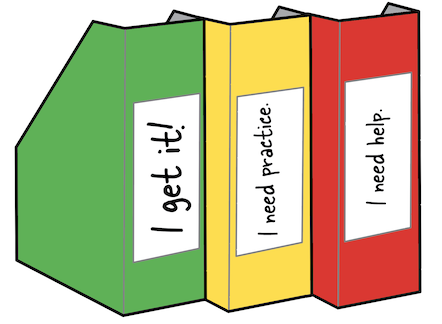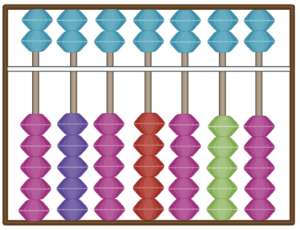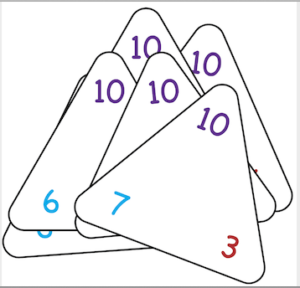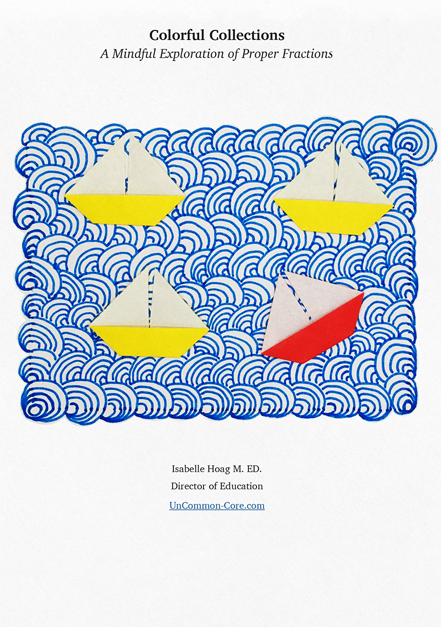
Tailoring instruction to meet the needs of each individual student in your math class can be complex – or simple. We often go to great lengths in order to provide support and challenges at just the right level for each of our students.
We consider our students’ academic strengths and weaknesses, their linguistic profiles, their previous performances in math, their understanding of academic vocabulary, any social/emotional issues which may show up in class, and other factors depending on the specific group of students we have in class. At the same time, we are aware of our students’ need for time to reflect on what they are learning, assess their own performances, and process connections between new information and background knowledge.
Effective differentiation requires us to:
- know our individual students: what they like, what engages them, which aspects of the lesson are they likely to connect with, grasp easily, or find challenging.
- know the content including: prerequisite skills and concepts needed for the lesson, possible extensions, how the content connects with other academic subjects or personal characteristics of our students, and, based on our understanding of our students, which parts of the lesson are likely to resonate with some or create stumbling blocks for others.
- Know the types of mistakes and misunderstandings students like yours typically run into when learning this specific content.
- understand the complexities of managing a differentiated class.
Yet there are some simple ways to automatically include differentiation in daily routines and activities. Please, try the ideas that interest you and ignore those that don’t. Which of these ideas could you put into action tomorrow? Which do you think would have the most impact in terms of meeting the needs of all the various students in your class?
Built-In Self Reflection
Whenever your students turn in their work, have them place it in one of three different places. Whether you use shelves, tubs, boxes, or other ways to turn in work, label them using the traffic light colors and meaning geared to your grade level.
Kindergarteners, first and second grade students could use green, yellow, and red tubs to turn in their work. The green tub might have a label reading, “Easy for me,” the yellow tub could be labeled, “I worked it out,” and the label on the red tub could say, “I don’t get it yet.”
Older students could use a similar color system with labels written for them. You might have them turn in their work with the front of the page facing down for more privacy. When turning in workbooks, you could have them label the completed page with a green happy face, an orange face showing how they feel, or red question marks beside the questions they couldn’t get on their own yet, or they struggled with.
This system of reflecting on ~ and communicating ~ how well they grasp the material every time they turn in work helps them develop a wonderful habit. After using this system for a while, students will see the natural ebb and flow of their learning process.
You can see how well their self assessment relates to their scores and your assessment. Depending on the number of students expressing difficulties you may decide to reteach everyone, grab a small group for a mini lesson/review, or meet will an individual or two to address their puzzles or questions.
Differentiating for Academic Success
Offer extensions or challenges to everyone in the class. Provide enough copies for everyone. Make sure everyone knows the extension is optional. Then see what happens. First, including everyone in the challenge signals that you have confidence in all your students. Even if you have ability based math groups, this inclusive invitation lets students know that abilities change depending on how hard they work; even if they choose not to do the extension activity (or if they choose an easier activity) they know that eventually they will be able to tackle more. When you let students decide whether or not to try more difficult work, you may be surprised at the response.
Similarly, offer support to everyone in the class. Again when you let students choose the type of support they need or whether or not they need support, you reinforce the idea that everyone needs help sometimes and asking for or receiving help is a natural part of learning.
 Which type of support would benefit your students?
Which type of support would benefit your students?
- Working in pairs
- Working in a small group with an aide
- Choosing which type of manipulatives to use
- Taking home a vocabulary worksheet to prepare for a lesson
- Sharing vocabulary to prepare for a lesson with the ESL teacher
- Using a multiplication chart or (gasp) a calculator so students focus on learning the concepts in the lesson
- Participating in small groups that review skills or concepts that are prerequisites for learning the new concept in advance of the lesson
- Working with peers that all speak the same language first, then swapping into pairs or groups that use English
 Individualize flashcard presentations by using this self-paced technique. I used multiples of 16 in this video to help teachers and parents see flashcards from a student’s point of view. At the end of the video, you will see that by using this method the deck of cards is naturally arranged in the perfect order! It is ready for the next time that same student practices math facts with their deck.
Individualize flashcard presentations by using this self-paced technique. I used multiples of 16 in this video to help teachers and parents see flashcards from a student’s point of view. At the end of the video, you will see that by using this method the deck of cards is naturally arranged in the perfect order! It is ready for the next time that same student practices math facts with their deck.
Real Time Whole Group Assessment
Train your students to use:
- Thumbs up for ‘yes’
- Thumbs down for ‘no’
- In the middle for ‘I don’t know’.
This technique can be used in every part of your daily class routine. In math, you can ask a yes/no question related to the big ideas in the lesson, then get a quick visual of how your students think they are doing. This is another self assessment technique that helps students develop the habit of monitoring their own understanding.
If you don’t have a yes/no question at the ready, you could ask, “Could you explain (this idea) to (the class, me, the principal…) right now?” Depending on the students’ responses you could invite them to quickly write down:
- “Yes” What would they say in their explanation?
- “No” What questions or puzzles do they have?
- “I don’t know” what information would they need to make the decision?
Class discussions provide a great place to use this technique. After a student has answered a question, ask the class if they agree or not. When you make this part of your class discussions, students will feel more personally engaged. A quick glance around the room will help you decide what each student needs next. Some may be ready for independent work, others may need more support, and some may be missing some important background information, or have misunderstandings that need to be addressed immediately.

Check in with your students every so often to see how they think they are doing. You could invite students to complete this fun check in form. Are their glasses all fogged up so they don’t see the content clearly? Are they able to see the content clearly and focus on important ideas? Little kids might draw or record their responses while older students could write down their thoughts. You might make these forms available continually so that students could share their thoughts with you at any time.
You are differentiating instruction when you:
- Offer students choices
- Support or challenge students according to their needs
- Vary the pace to accommodate student needs
- Create temporary groups of students based on their current needs for mini lessons or extra practice
- Allow individual reflection time
- Pretest then prepare students by reviewing vocabulary, skills, or concepts that they will need
I’m sure you are already doing lots of differentiation like the ideas above or using other techniques that let your students know, you see them as individuals and you value their unique contributions to class.
Share This Story, Choose Your Platform!
Download Colorful Collections:
A Mindful Exploration of Proper Fractions
Help your students make sense of fractions.
I started teaching in 1987, which means I’ve collected many tips and tricks along the way. In this ebook, I share concepts, strategies, and classroom materials to help you make math sticky.
Along with this useful ebook, you will receive weekly emails from StickyMath@UnCommon-Core.com. I send information like: teacher tips, educational ideas, book reviews, curated lists, reviews of educational sites, and free first drafts of products that I’m creating for my TPT store. That way, you get helpful ideas and free stuff, while I get some feedback before I finalize products and put them up for sale.
I value your privacy. I will never sell your information. You may unsubscribe at any time.
All the best!
Isabelle
Isabelle Hoag M. Ed.

